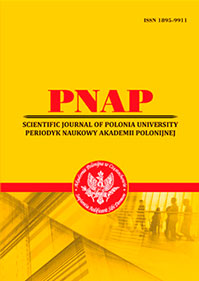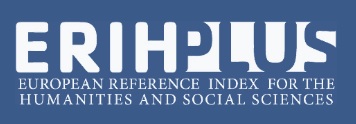THE CROSS-LANGUAGE PHENOMENA AS A TRANSLATION PROBLEM
Abstract
The presented article is devoted to the problem of reflecting on cognitive semantics in the translation process, which raises the analysis of translationrelevant strategies to a fundamentally different level. Their mutual connection with the translation process is examined, as is the influence of cognitive semantics on the theory and practice of translation. The author tries to determine the difference between the structural and cognitive semantics from the standpoint of its relevance to the translation process. In addition, the interaction of cognitive semantics with the translation process, as well as the resulting translation paths, is presented in the article. The goal set can be realized on the basis of the so-called cross-lingual phenomena, which are defined as fragments of the mental experience of native speakers that are “stored” in the memory of a language user as a regular stereotyped body of knowledge. Since cognitive linguistics also defines cross-lingual phenomena as concepts, the assumptions made are based on the classifications of concepts recognized in specialist literature, namely social concepts. Assuming that these were anchored in the practice of speech by language users in the form of a linguistic-cognitive algorithm, its effects on the selection of translation strategies are analyzed. The cognitive semantics in the selection of the translation strategies are examined here on the basis of their representatives, the so-called “portrait verbs”, which in the overall text can form a specific phenomenon “the portrait of a person” and promote both the aesthetic and cognitive function of the text. This cognitive-linguistic structure can be called a translate when translating and can function as a complex, cross-level translation unit. The task of translation consists in the attempt to assign the target cultural phenomena to the extra-linguistic ones.
References
2. Вежбицкая А. Семантические универсалии и описание языков. Монография. Москва : Прогресс., 1971. 312 с.
3. Гуревич А.Л. Человек и культура: Индивидуальность в истории культуры. Монография. Москва : ИЦ “Академия”, 1990. С. 110.
4. Коптілов В. Теорія і практика перекладу. Монографія. Київ : Юніверс, 2003. 280с.
5. Манн. Т. Сповідь афериста Фелікса Крулля. Роман / Переклад з німецької Р.Осадчук. Буча : ФОП Жупанський;. 2011. 342 с.
6. Фесенко Т.А. Концептуальные основы перевода. Монография. Тамбов : Изд–во Тамбов. ун–та, 2001. 124 с.
7. Hönig Hans G. 1995, Konstruktives Übersetzen. Tübingen: Stauffenburg, s. 66.
8. Mann. T. Bekenntnisse des Hochstaplers Felix Krull. Memoiren. Frankfurt am Main: S. Fischer Verlag, Dritte Ausgabe., 2002. 346 s.
9. Stolze R. „Die Fachübersetzung“ – Eine Einführung, Tübingen: Gunter Narr Verlag., 1999. S. 249–253
10. Зюскінд П. Парфуми : Роман / Переклад з німецької С. Фрідріх. Всесвіт. 1993. № 11–12.
11. Süskind Р. Das Parfum. Die Geschichte eines Morders.www.read. URL: free.ru zyuskind_ patrik
 ISSN
ISSN 


.png)



